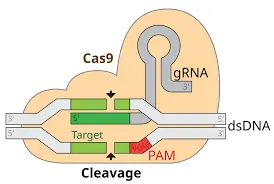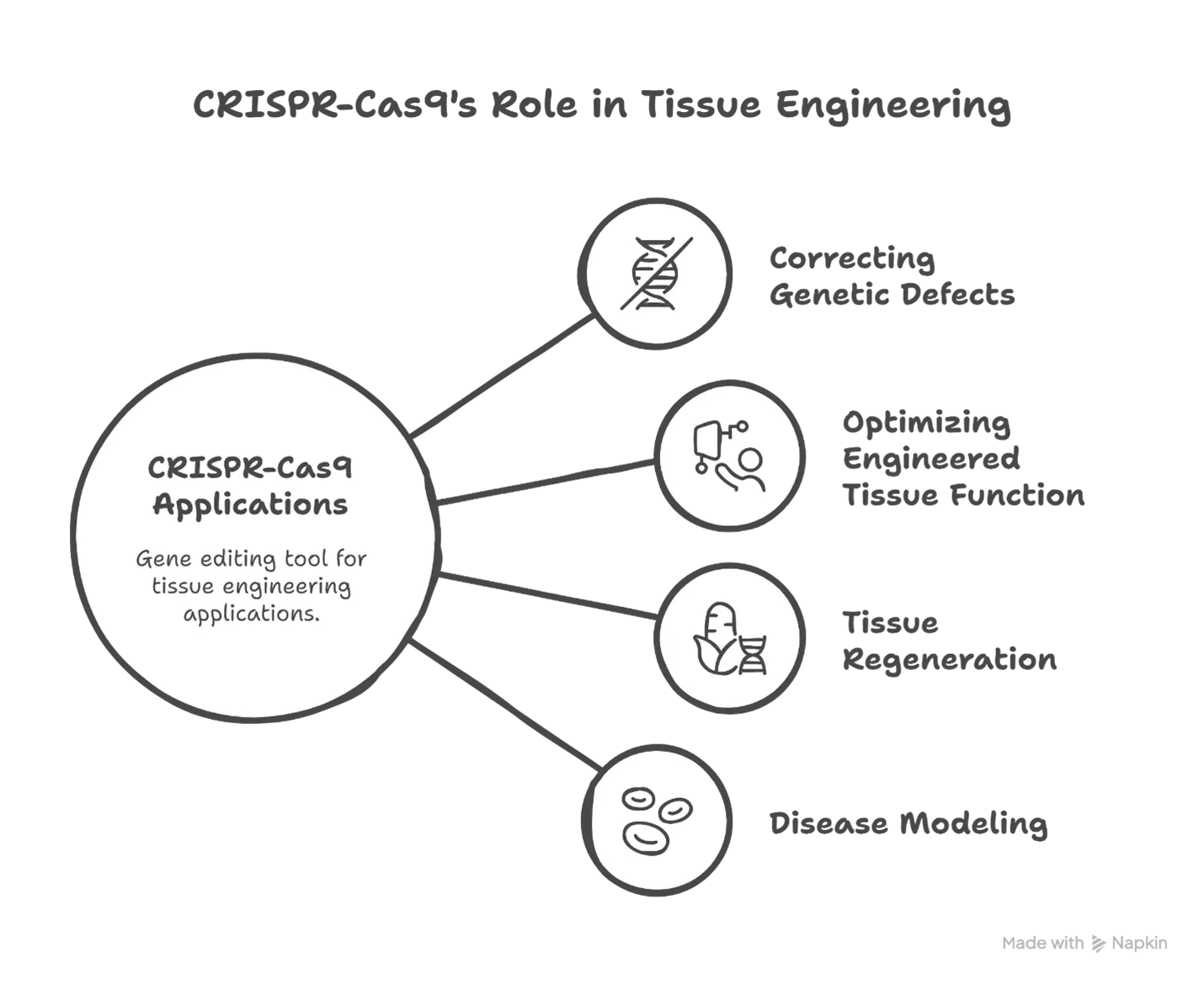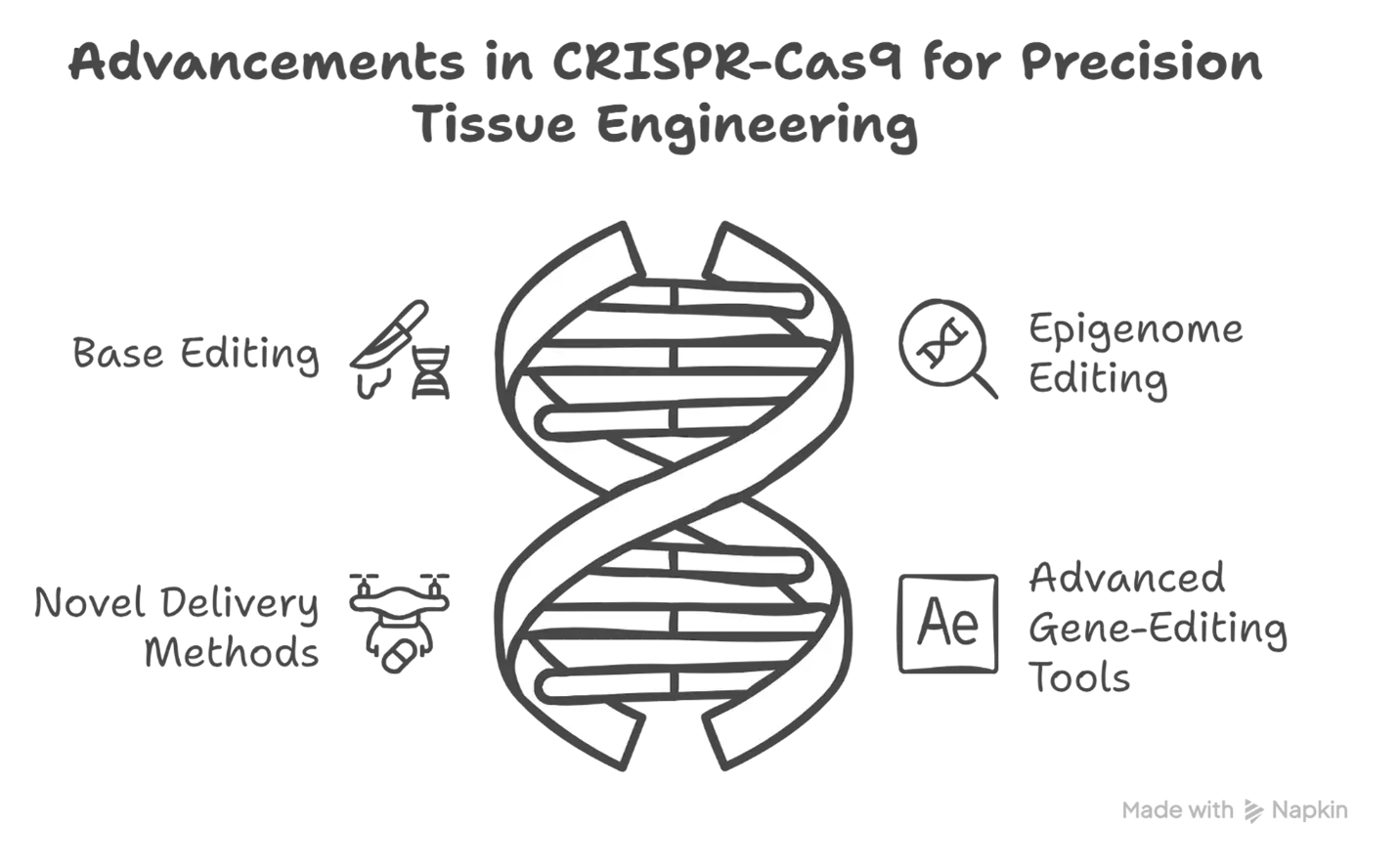Introduction
Genetic modifications play a crucial role in advancing tissue engineering and regenerative medicine, offering new solutions for correcting genetic defects and optimizing tissue functionality. The introduction of CRISPR-Cas9 has revolutionized gene-editing by enabling precise, targeted genetic alterations. This tool holds immense promise for enhancing the design of engineered tissues and advancing personalized regenerative therapies.
Description:
- Integrating gene-editing technologies like CRISPR-Cas9 allows for precise genetic modifications within cells, providing the potential to correct genetic defects in engineered tissues and enhance tissue functionality.
Principles of CRISPR-Cas9 Technology:

CRISPR-Cas9 is a groundbreaking gene-editing tool derived from bacterial defense mechanisms. The system comprises two key components: guide RNAs, which direct the Cas9 endonuclease to specific DNA sequences, and the Cas9 enzyme, which introduces double-strand breaks in the target DNA. This allows for precise genome editing, such as gene knockout or replacement, facilitating the correction of genetic defects in engineered tissues.
Clinical Translation and Regulatory Considerations:
As gene-editing technologies like CRISPR-Cas9 advance toward clinical applications, regulatory considerations are critical for ensuring patient safety and efficacy. The regulatory landscape is evolving, with agencies focusing on establishing guidelines for gene-editing therapies in humans. Ethical concerns related to gene editing, especially in germline modifications, require careful consideration to balance innovation with safety and societal impact.

Applications of CRISPR-Cas9 in Tissue Engineering:

Challenges and Considerations:
Despite its revolutionary potential, CRISPR-Cas9 technology faces challenges such as off-target effects, delivery efficiency, and ethical concerns. Off-target edits may lead to unintended genetic changes, and efficient delivery to target cells remains a significant hurdle. Ethical concerns also arise in relation to germline editing and the potential for unintended consequences. Strategies are being developed to mitigate these risks and improve the precision and safety of CRISPR-Cas9-based gene editing.
Future Directions and Emerging Trends:


